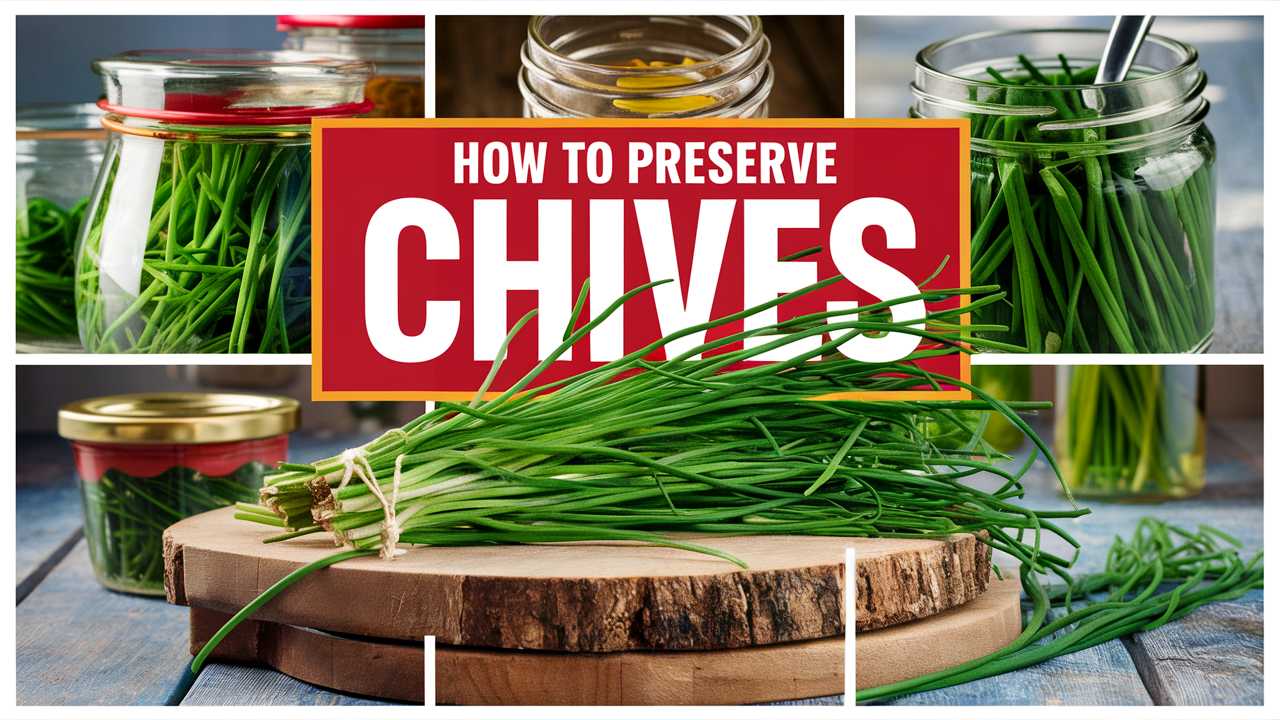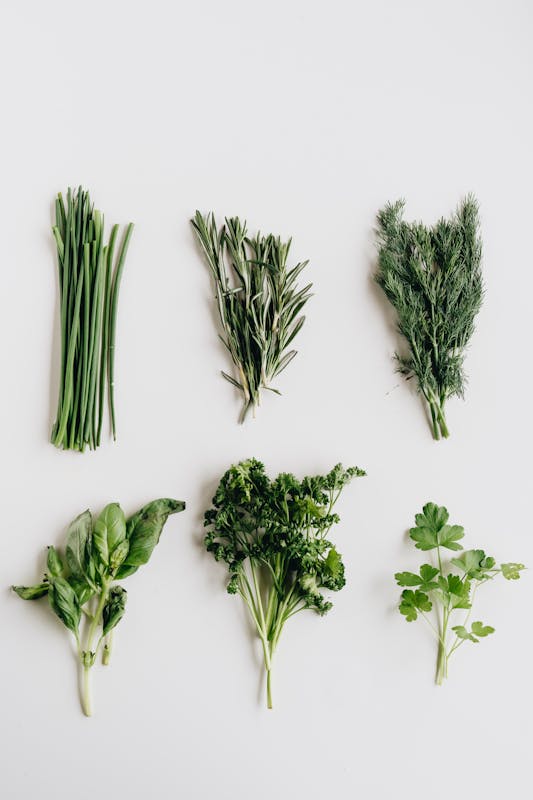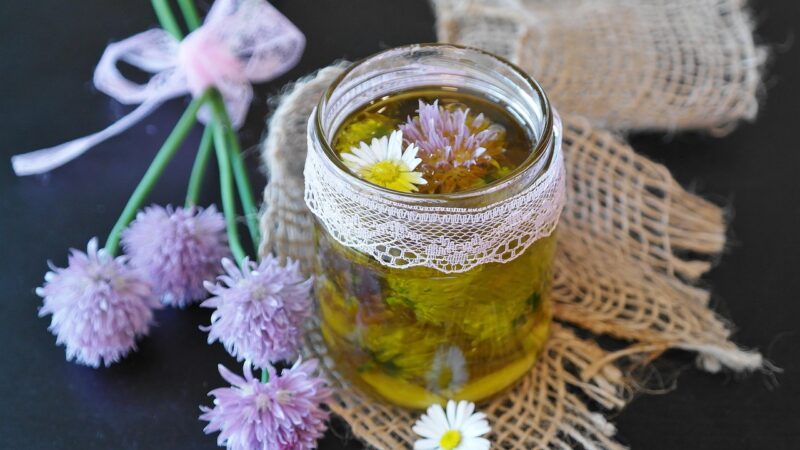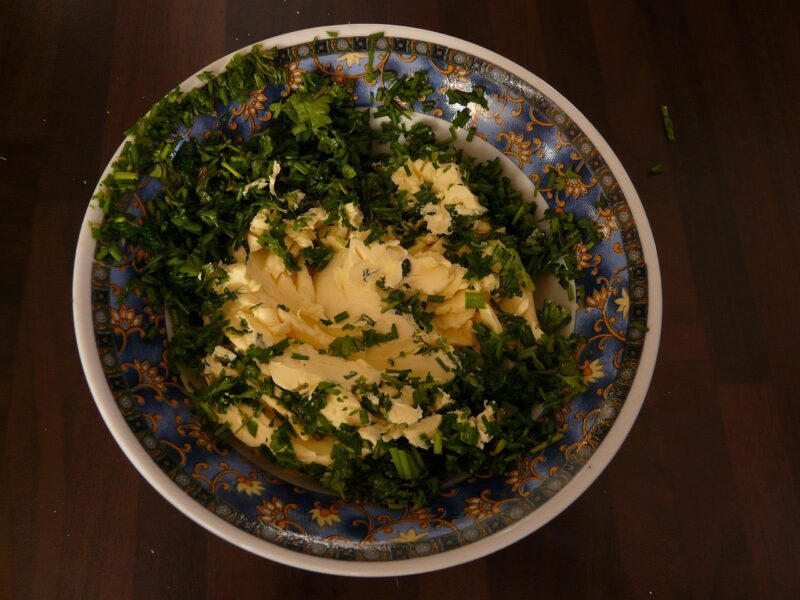This post will explore a wealth of strategies for preserving chives, ensuring your kitchen is always stocked with their fresh, vibrant essence no matter the season.
Growing Your Chives: Fresh Supply for Preservation
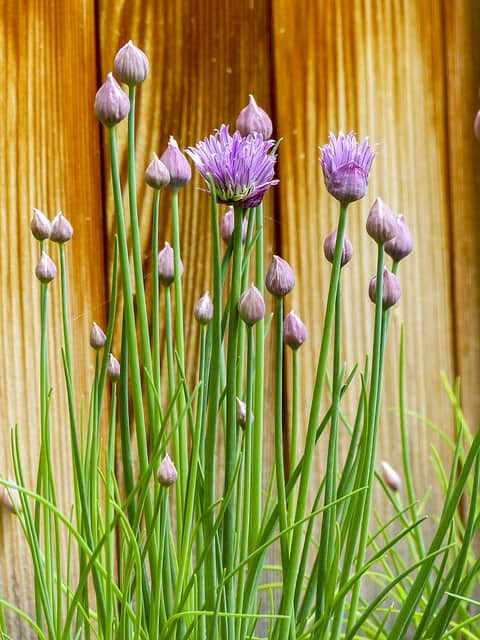
Growing chives in your garden or even on a sunny windowsill is a fantastic way to ensure a consistent supply for preservation. They thrive in well-drained soil and need regular watering, especially during dry spells. After planting, you can expect to harvest fresh chives within a few weeks. Trimming chives encourages new growth, allowing for continual harvesting throughout the growing season.
For anyone without a garden space, consider growing chives in pots. They require minimal care and can adapt to indoor environments, making fresh chives easily accessible throughout the year.
Harvesting Chives: Timing and Techniques
Knowing when and how to harvest chives is crucial for preserving their flavor. Ideally, you should harvest chives in the morning after the dew has dried but before the heat of the day sets in. This timing helps retain the best flavor and aroma. Use sharp scissors or garden shears to snip the leaves, cutting them close to the base. Always leave a few inches above the ground to allow the plant to continue producing new growth.
You can pick chives that are at least 6 inches tall. Frequent harvesting allows you to enjoy their flavor throughout the season while encouraging the plant to keep growing.
The Best Methods for Preserving Chives
Now that you have a fresh supply of chives, let’s discuss the various methods to preserve them. Each technique has its unique advantages, so choose one—or several—that suit your needs and lifestyle.
Freezing Chives
Freezing is one of the simplest ways to maintain the vibrant flavor of chives. Here’s how to do it effectively:
Preparation: Start by washing the chives thoroughly to remove any dirt or insects. Pat them dry with a paper towel to eliminate excess moisture.
Chopping: Decide on the size you’d like for the chives once frozen. You can either leave them whole or chop them into small pieces.
Blanching (optional): Blanching helps to preserve color and texture. Immerse the chives in boiling water for about 30 seconds, then plunge them into ice water immediately. Drain and dry.
Storage: Place them in an airtight container or a freezer-safe bag. If using a bag, try to remove as much air as possible before sealing. Label the container with the date and freeze.
Frozen chives maintain their flavor for up to 6 months, making them a perfect addition to soups, stews, and casseroles.
Drying Chives
Drying chives is another effective method, ideal for creating a long-lasting herb that can be used as a seasoning. There are several ways to dry chives:
Air Drying: Gather a small bunch of chives, tie them together with string, and hang them upside down in a dark, dry place. Ensure that there is good air circulation to prevent mold.
Oven Drying: Spread washed chives in a single layer on a baking sheet and set the oven to the lowest temperature (around 150°F or 65°C). Keep the oven door slightly ajar to allow moisture to escape. This method typically takes 1-3 hours.
Dehydrator: If you have a food dehydrator, spread the chives evenly on the trays. Set the dehydrator to the herb setting and allow it to run until they are completely dry.
Once dried, store chives in an airtight container in a cool, dark place. They typically retain their flavor for up to a year. Not only do dried chives retain much of their essence, but they also make a convenient garnish for various dishes.
Making Chive Oil
Chives can also be preserved in oil, which creates a beautiful and flavorful addition to your pantry. Here’s how to make chive oil:
Ingredients: About 1 cup of fresh chives and 1 cup of high-quality oil (olive oil works well).
Preparation: Wash and dry the chives thoroughly.
Blending: Combine the chives and oil in a blender. Blend on high until fully integrated, creating a bright green mixture.
Straining: Pour through a fine-mesh strainer or cheesecloth into a clean bottle, pressing to extract as much oil as possible.
Storing: Keep the chive oil in the refrigerator, where it will last about 2-3 weeks.
Chive oil is delightful drizzled over grilled vegetables, mixed into salad dressings, or used as a finishing touch for pasta.
Chive Butter
Chive butter is a delicious way to incorporate preserved chives into your meals. This compound butter is simple to make and can be stored in the refrigerator or freezer. Here’s a quick recipe:
Ingredients: 1 cup of softened unsalted butter and 1/4 cup of finely chopped chives.
Method: In a bowl, mix the softened butter and chives together until well combined. For added flavor, consider including garlic or lemon zest.
Forming: Spread the mixture onto a sheet of plastic wrap and roll it into a log shape. Twist the ends to seal.
Storage: Place the log in the fridge for immediate use or in the freezer for longer storage.
Chive butter is versatile—use it to finish roasted meats, spread on bread, or stir it into dishes for extra richness.
Tips for Using Preserved Chives
As you explore the various methods of preserving chives, consider these tips for using your preserved bounty:
Cooking with Frozen Chives: There’s no need to thaw frozen chives before adding them to dishes. Simply toss them directly into soups, stews, or sauces for a quick flavor boost.
Substituting Dried Chives: When using dried chives, remember they are more potent than fresh. Use one tablespoon of dried chives for every tablespoon of fresh chives called for in recipes.
Incorporating Chive Oil and Butter: Use chive oil to dress salads, drizzle over seafood, or enhance baked potatoes. Chive butter can elevate simple dishes like popcorn, grilled meats, and even scrambled eggs.
Creative Ways to Use Chives
Chives are not just a garnish but can be a centerpiece of your culinary creations. Here are some innovative ways to enjoy them:
Chive Pancakes: Incorporate chopped chives into your pancake batter for a savory twist. These can be served with a dollop of sour cream or yogurt.
Chive Pesto: Blend fresh chives with nuts, garlic, parmesan cheese, and olive oil to create a savory pesto. This can be tossed with pasta or used as a spread on sandwiches.
Chive and Cheese Dip: Mix chives into cream cheese with herbs and spices for a delightful dip that pairs beautifully with crackers or veggies.
Chive-infused Vinegar: Infuse vinegar with fresh chives for salad dressings or marinades. This method is as simple as placing clean chives into a bottle of vinegar and letting it steep for a couple of weeks.
Final Thoughts: Embracing the Seasonality of Chives
While chives are perennial herbs, their peak flavor is closely tied to the growing season. Learning to preserve chives allows you to embrace their seasonality, celebrating the herb’s unique flavor year-round. Each preservation method offers its distinct possibilities, and experimenting with these techniques opens up a world of culinary creativity.


